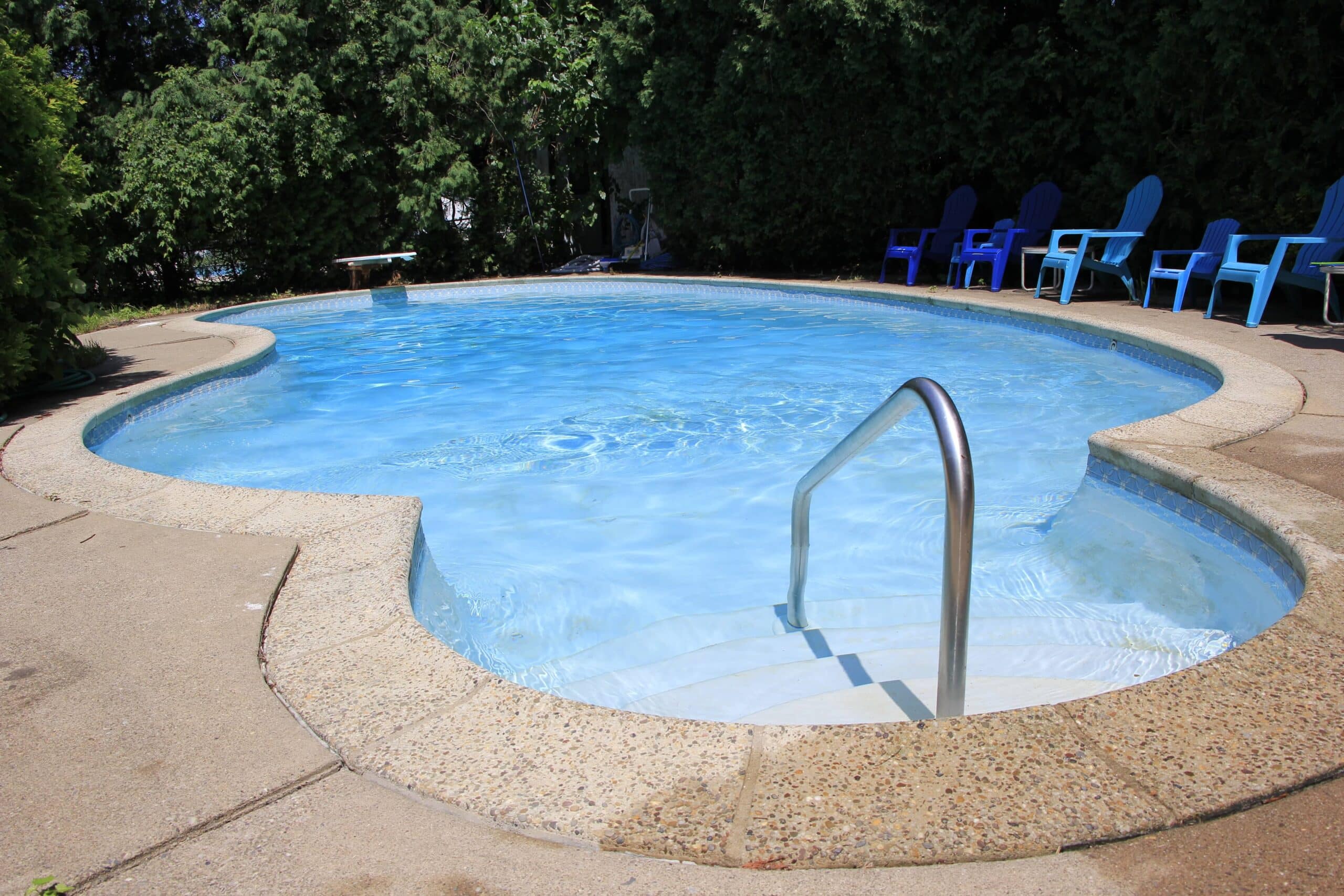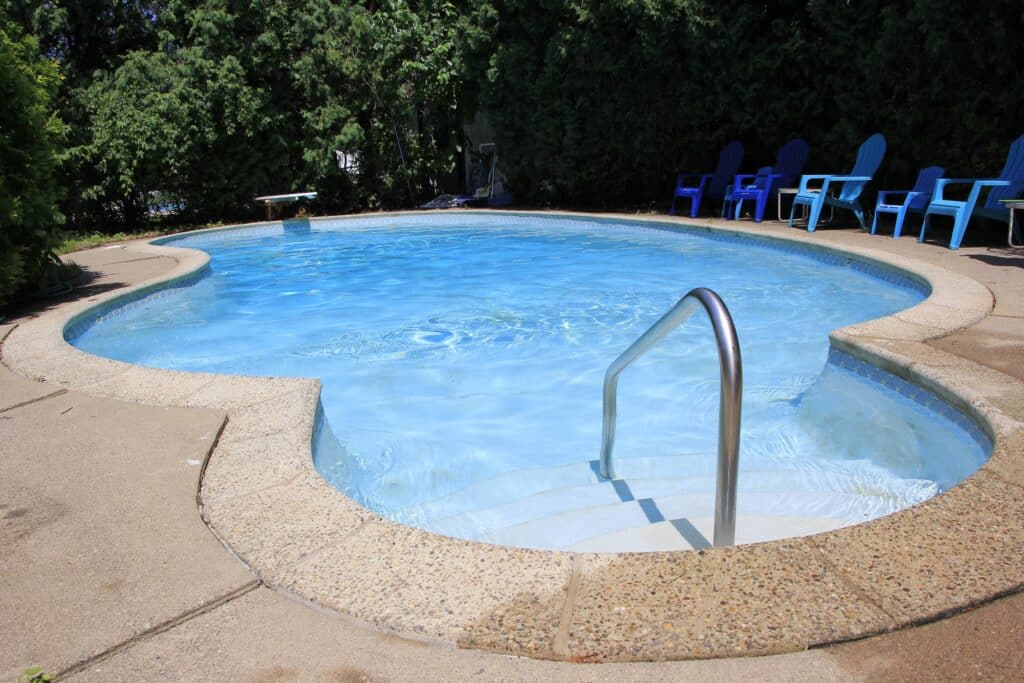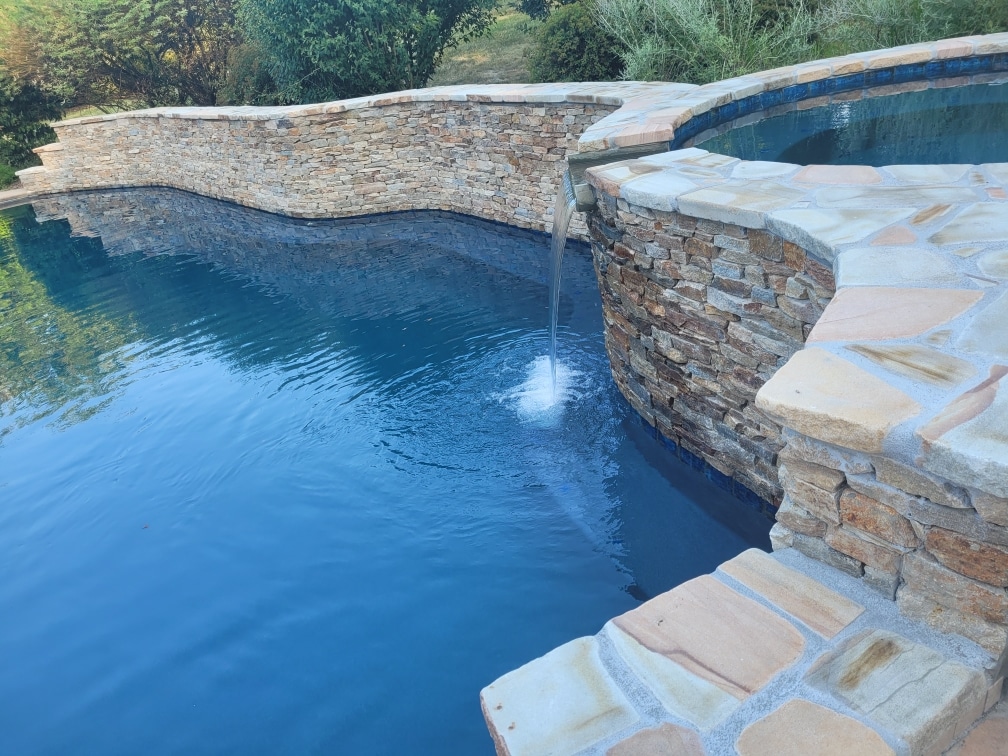
Deciding to add a pool to your home can be exciting, but figuring out how to pay for it might feel overwhelming. Rest assured, there are several ways to get the money you need. This article will guide you through different methods, from loans based on your house’s value to personal loans without security.
Understanding Pool Financing
Financing a pool requires understanding different ways to borrow money. You can take out personal loans, use the value in your home through home equity loans or lines of credit, or get cash from refinancing your mortgage.
After figuring out how much money you’ll need for the pool and learning about borrowing options, compare these choices carefully. Look at terms like repayment periods that could last up to 15 years for some types of loans and consider interest rates which vary.
This step helps ensure you find a financing route that fits your financial situation before moving forward with getting the funds for your pool project.

Pool Financing Options
When considering pool financing options, individuals can explore various avenues such as personal loans, home equity loans, or cash-out refinancing to fund their pool projects. Contractor financing and home equity lines of credit are also viable alternatives to consider for securing the necessary funds.
Personal Loans
Personal loans offer a simple way to finance your pool without tying the loan to your home as collateral. Lenders provide personal loans ranging from $1,000 to $100,000, allowing you flexibility in borrowing exactly what you need for your project.
Since these are unsecured loans, lenders determine your eligibility based on your creditworthiness and financial history.
The annual percentage rates (APR) for personal loans can vary widely from 6% to 36%. Your rate depends on factors like your credit score and income. Personal loans give borrowers fixed repayment terms, which means you’ll pay back the loan with interest in regular payments over a set period of time.
This option can quickly get cash into your hands for fast funding of your pool project.
Home Equity Loans
Home equity loans let homeowners borrow a lump sum by using the value of their house as collateral. They offer up to 85% of the home’s worth minus what is still owed on the mortgage.
This type of loan has repayment periods that can last up to 15 years. Interest rates for these loans usually start at around 9%. This makes them a predictable option since they come with fixed interest rates, meaning your monthly payments stay the same.
With this financial tool, you need a good credit score and proof that you can pay back the money. Lenders will check your credit history carefully before approving your loan application.
Once approved, you receive the entire loan amount upfront, which is ideal for covering the high costs of pool installation quickly.
Home Equity Lines of Credit
Home Equity Lines of Credit (HELOCs) offer flexible borrowing options for pool financing. With average APRs starting around 9% and a draw period of 10 years, HELOCs allow homeowners to access funds as needed.
These are secured by the home’s equity, typically offering lower APRs compared to unsecured financing options like personal loans. You can use HELOC funds to cover the installation cost of in-ground or above-ground pools and also ongoing maintenance expenses.
Utilizing a HELOC for pool financing requires careful consideration of the draw period, repayment terms, and potential impact on the home’s equity. It could be a convenient option for those with available equity who desire a long-term repayment plan toward their investment in a swimming pool.
Cash-out Refinancing
Cash-out refinancing is a method that involves replacing your current mortgage with a new one for an amount larger than you owe. Typically, this surplus is used to cover the cost of installing a pool.
The terms frequently span 15 or 30 years and can come with interest rates ranging from 6% to 8%, based on factors like credit scores and loan amounts. This option can be suitable for sizable pool installations, particularly if the new mortgage rate is lower than your existing one.
By opting for cash-out refinancing, homeowners benefit from potentially lower mortgage rates, lenient credit and income requirements compared to other financing options, as well as tax-deductible interest on the extra money borrowed.
Contractor Financing
Some companies collaborate with third-party lenders to offer this type of financing, typically providing amounts up to $200,000 or more.
The repayment terms can span up to 20 years, and the interest rates usually start around 5%. This option offers flexibility for homeowners looking to finance their pool construction through specialized lending solutions tailored towards home improvement projects like pools.
Steps to Finance a Pool
Estimating your budget for pool installation is the first step in financing a pool. Once you’ve estimated your budget, you can proceed with a credit check and prequalification when considering various lenders and loan options.

Estimate Your Budget
To estimate your budget for a pool, consider the type of financing you plan to use and the total cost of installation.
In-ground pools can cost between $50,000 and $200,000, while above-ground pools range from $700 to $5,000. Evaluating all these costs against your financial capacity will help you determine how much you’ll need in funding.
When estimating your budget for a pool, be sure to factor in any additional expenses like maintenance and water treatments. Look for sales when searching for a pool. We have an article to help you find when pools go on sale.
Credit Check and Prequalification
Before applying for pool financing, it’s important to undergo a credit check and prequalification process. Lenders will review your credit report and score to assess your creditworthiness.
This step helps determine the loan amount, interest rates, and terms you may qualify for. Prequalification gives you an estimate of the loan amount you can secure based on your financial situation and credit history.
To accurately gauge where you stand in terms of qualifying for a pool financing option, potential lenders usually conduct a thorough investigation into your financial standing. This includes analyzing factors such as income, employment history, debt-to-income ratio, and existing loans or lines of credit.
It’s advisable to review your credit report beforehand to ensure there are no errors that could affect the prequalification process.
Apply for Pool Financing
When applying for pool financing, it is crucial to estimate your budget and review your credit options. Start by seeking prequalification and comparing loan terms from different lenders to find the best fit for your financial situation.
Make sure you understand all the costs involved and choose a financing option that aligns with your long-term plans for enjoying your new pool.
How Much Does It Cost to Build a Pool?
Building a pool typically costs over $50,000 for an in-ground pool, including installation. This figure includes both labor and materials.
It’s important to consider additional expenses such as permits, landscaping adjustments, decking or patio construction around the pool area which can add significant costs to the overall project.
It’s advisable not to overlook long-term maintenance costs when budgeting for a pool. Homeowners should also factor in ongoing expenses like water treatment chemicals; routine cleaning and servicing; heating; electricity for pumps and lighting; and seasonal opening/closing processes.
If you have more questions on pricing, check out our article on the topic:
Is Pool Financing a Good Idea?
Considering the various pool financing options available, it’s important to evaluate whether taking on a loan for a pool is a prudent decision. While personal loans offer flexibility and quick access to funds, they often come with higher interest rates compared to home equity loans or lines of credit.
Home equity loans and HELOCs leverage the value of your property but involve using your home as collateral. Cash-out refinancing can provide substantial funds at lower interest rates, but it increases your mortgage debt.
Taking advantage of contractor financing may offer competitive rates; however, careful consideration should be given to overall borrowing costs including interest and fees. It’s important to weigh the benefits against potential risks such as foreclosure if you’re unable to make payments.
Make the most of your pool financing by waiting for the right time to buy a pool. Here’s an article on the subject:
Understanding these complexities will help you make an informed decision about leveraging different types of funding for pool installation while ensuring that your investment in a backyard oasis aligns with your financial goals.
Conclusion
When financing a pool, it’s essential to explore various options like personal loans, home equity loans, and contractor financing. Assess your budget carefully and compare available loan options before making a choice.
Consider the cost of installation and ongoing maintenance to determine your overall financial commitment. Tapping into home equity for lower interest rates can be advantageous when securing pool financing.
Always remember to evaluate the long-term financial implications to make an informed decision on how best to finance your dream pool.
